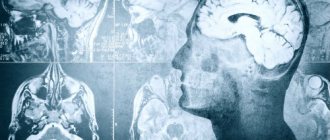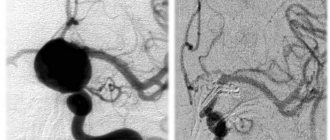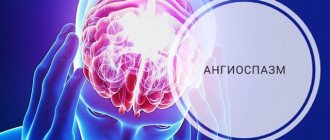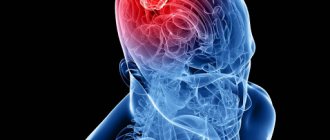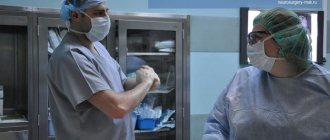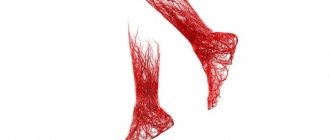How to quickly eliminate the effect of alcohol on blood vessels and organs
It is important to take plenty of water. It is recommended to drink strong green tea. With excessive alcohol consumption, a violation of lipid-water metabolism is observed. In addition, frequent vomiting contributes to dehydration In case of severe intoxication, specialist help may be required. You should call a doctor immediately if:
- profuse vomiting;
- the presence of red discharge in the vomit;
- epilepsy attack;
- strong internal tremor;
- frequent fainting;
- delusional ideas;
- visual and auditory hallucinations;
- suicidal thoughts;
- aggressive behavior.
You can quickly eliminate the effect of alcohol on vital organs and systems and blood vessels using infusion therapy. The medicine enters directly into the blood, the effect occurs much faster than when taken orally The exact dosage of drugs and the composition of the medicinal solution for infusion should be determined by a narcologist. Typically it contains:
- painkiller,
- sedative,
- antiemetic,
- antidepressants,
- antiallergic,
- glucose,
- vitamins,
- microelements.
The intake of magnesium and potassium ions is important. These microelements improve the functioning of the circulatory system and minimize the risks of heart attack and stroke. Under no circumstances should you use a proven hangover remedy like again . The effect will be short-lived. Alcohol dilates blood vessels in the brain, so headaches may go away. But there is also another side to the coin. After some time, the person will experience a headache 2 times stronger than before.
How to improve the functioning of the heart and blood vessels after drinking alcohol
The morning after the feast, the first thing you should do is to eliminate intoxication from the body as quickly as possible. It is important to drink more fluids. Under no circumstances should you drink alcohol again. It's better to give your body a rest. It is worth giving up “heavy” foods. The diet should consist of:
- fresh vegetables and fruits;
- fermented milk products;
- boiled eggs;
- cereals;
- freshly squeezed juices;
- compotes
If alcohol has been consumed, staying in the fresh air will have a beneficial effect on the heart and blood vessels. When walking, cells are more saturated with oxygen, so it is important to move more. Strong physical activity with a hangover is contraindicated as well as a sauna. High temperatures also put stress on the heart.
After drinking alcohol, it is important to take a break, which is necessary to restore normal functioning of the body. Alcohol affects not only blood vessels and the heart. The liver is primarily affected. This is the main filter of our body, preventing toxic substances from entering the bloodstream. With excessive alcohol intake, the liver does not properly cope with its direct responsibilities. Therefore, it is important to know the norms for alcohol consumption.
You can drink no more than 200 ml of wine or 100 grams of vodka per week. It is clear that the onset of withdrawal syndrome occurs individually. However, with age, a person gets drunk faster and faster. This is due to the aging of organs, blood vessels, and a slowdown in metabolic processes. Therefore, you should not be negligent about your own health. It is important to take care of it from a young age.
Consequences and complications
The consequences of vasospasm are determined by the duration/severity of ischemia in the area of the spasmodic artery, the sensitivity of tissues/organs to oxygen deficiency, as well as the development of collateral circulation in the affected organ. The brain and heart muscle, kidneys, and spleen are especially sensitive to hypoxia. Accordingly, ischemia of these organs is accompanied by a high risk of developing ischemic stroke and myocardial infarction . Prolonged vasospasm of the arteries of the lower extremities can cause the development of obliterating diseases ( atherosclerosis obliterans , thromboangiitis obliterans , endarteritis obliterans , diabetic angiopathy ), retinal vasospasm - visual disorders, and so on.
Pathogenesis
The pathogenesis of vasospasm has not yet been fully studied, which is largely due to its non-identity for arteries of different vascular regions. It is generally accepted that a common factor in the mechanism of development of vasospasm includes functional disorders of the membranes of smooth muscle cells of the vessel, the essence of which is a violation of the exchange of potassium, calcium, and sodium ions through the membranes, which disrupts the alternation of muscle contraction/relaxation phases. Enhanced/accelerated depolarization of membranes, as well as an increased influx of free calcium ions into cells, contribute to intense muscle contraction, and a delay in membrane repolarization (preceding muscle relaxation) contributes to prolonged contraction of the arterial wall.
Disturbances of this kind may be caused by disturbances in the innervation of vascular walls, an imbalance in the production/destruction of humoral regulators of tone, increased sensitivity of vascular wall receptors to the effects of vasoconstrictors, and a disorder of humoral regulators of vascular tone. Often, stenosis can develop against the background of local changes in the vessel wall in areas of thrombus , vascular inflammation, scars (for example, near the area of coronary artery thrombosis/location of an aneurysm or atherosclerotic plaque).
Treatment
Mostly conservative methods are used as therapy, which involve strengthening blood vessels and the state of health in general. For the treatment result to be effective, it should begin with a consultation with a doctor, who will collect anamnesis, prescribe additional studies and select the correct treatment method.
Depending on the symptoms, rubbing of the limbs, surgery, novocaine blockade and appropriate medications are prescribed, and a number of other measures are taken to alleviate the patient’s condition.
Nocturnal epilepsy
In one third of patients, epilepsy attacks occur at night. Pathological signs may appear when falling asleep, during sleep, or during awakening. Nocturnal epilepsy occurs under the influence of the following factors:
- Hereditary predisposition;
- Suffered traumatic brain injury;
- Excessive consumption of alcoholic beverages;
- Sleep disorders;
- Prolonged psycho-emotional stress.
The duration of a nocturnal epilepsy attack varies from a few seconds to five minutes. Most patients do not remember the seizures that occurred. Some people clearly describe the sensations they experience. An epileptic attack that occurs during a dream is accompanied by the following manifestations:
- A sharp, causeless awakening;
- Feeling of nausea, which may result in vomiting;
- Severe headache;
- Tremor;
- Pronunciation of unusual sounds;
- Speech impairment.
During a nocturnal epilepsy attack, patients may perform rash actions. They get down on all fours or pretend to ride a bicycle. You can suspect the presence of a nocturnal attack based on the following indirect attacks:
- Tongue bite:
- Traces of blood on the pillow after waking up;
- Bruises and abrasions on the body;
- Painful muscle syndrome;
- Wet bed due to loss of urinary control;
- Uncontrolled urination;
- Waking up in an unusual place (on the carpet, on the floor).
These symptoms are individual for each patient. They appear with one degree or another. Therefore, neurologists believe that nocturnal epilepsy attacks are very difficult to diagnose.
Rolandic epilepsy
Epilepsy of this type is focal and genetically determined. It manifests itself in rare attacks at night, they affect one half of the face with the tongue and pharynx. The Rolandic type is characterized by partial epileptic seizures without loss of consciousness.
The first sign of onset is tingling or numbness on one side of the face, lips, gums, or tongue. Afterwards motor paroxysms develop.
Make an appointment
Clinical manifestations of vasospasm
It must be remembered that cerebral vasospasm is a kind of circulatory disorder, and since the brain is associated with the regulation of neuropsychological processes, the main clinical manifestations are associated with a violation of neurological and psychological functions. To describe the symptoms of cerebral vasospasms, it is convenient to identify two groups: neurological and psychological lesions.
I. Neurological lesions in cerebral vasospasms.
- Headache, migraine. One of the early symptoms of vasospasm.
- Dizziness. As a rule, they arise spontaneously. They can occur together with loss of orientation in space.
- Feeling sick or suddenly vomiting.
- Visual, auditory, taste or olfactory disturbances, including hallucinations.
- Sometimes patients experience pain in various parts of the body (although the connection with cerebral vasospasm has not been established).
- Decreased performance.
- Increased fatigue.
II. Psychological disorders:
- The main and most alarming signs are memory impairment and amnestic syndrome.
- Various types of preservation (multiple repetitions of words or actions).
- Violations of psychological orientation. Patients are not able to talk about themselves, their profession, etc. This state is sometimes accompanied by apathy and indifference to the environment.
Causes
One of the main causes of epilepsy is considered to be a hereditary predisposition: if parents have a history of seizure symptoms, then the child is more likely to develop them. Epilepsy also develops under the influence of the following reasons:
- Traumatic brain injury;
- Cerebrovascular accidents;
- Cerebral vascular dysplasia;
- Volumetric formations in the cerebral cortex;
- Neurosurgical intervention;
- Infectious diseases of the central nervous system;
- Previous ischemic or hemorrhagic stroke.
The occurrence of epileptic attacks is caused by the presence in the cerebral cortex of a stable focus with epileptic activity. Convulsive activity from the primary focus can spread through commissural fibers, cortical neuronal complexes, and the centrencephalic system of the brain. In the presence of increased convulsive activity over a long period of time, secondary lesions arise. They can, under the influence of certain factors, become independent and independent. As a result, the attack in the primary focus fades, but not in the secondary. This picture is observed in patients after two years of illness. Over the course of some time, tertiary foci of seizure activity may develop in the cerebral cortex.
Epilepsy can develop under the influence of the following provoking factors:
- Hormonal imbalances;
- Alcoholism and drug addiction;
- Chronic stress;
- Excessive emotional stress;
- Chronic fatigue.
Secondary attacks of epilepsy occur in patients suffering from brain tumors, cerebral vascular pathology, after hemorrhage in the head, due to poisoning with toxic substances.
It is very important to identify the disease early to reduce the likelihood of complications. Which doctor treats epilepsy? For quality therapy, it is necessary to be observed by a neurologist, epileptologist, or psychotherapist. As clinical symptoms progress, assistance from a physiotherapist or pharmacologist may be required.
Prevention
Prevention of vascular diseases, including vasospasm, consists of maintaining a healthy lifestyle, including:
- Balanced diet.
- Active lifestyle.
- Stop smoking.
- Body weight control.
- Monitoring blood pressure , cholesterol /sugar levels.
- Periodic medical examinations.
The basis for the prevention of thrombosis and vascular diseases is the strengthening of blood vessels, which is achieved by regular practice of procedures such as contrast showers/douches, contrast foot baths, bath procedures, lymphatic drainage massage, pine/turpentine baths.
List of sources
- Krylov V.V., Gusev S.A., Titova G.P., Gusev A.C. Vascular spasm in subarachnoid hemorrhage. M.: Medicine; 2000.
- Avksentyeva M.V., Krysanov I.S., Chupin A.V. Pharmacoeconomic aspects of the treatment of obliterating diseases of the peripheral arteries of the lower extremities // Angiology and Vascular Surgery. 2012. T. 18, No. 4. P. 16-21.
- Drozhzhin E.V., Darwin V.V. The role of rheological disorders in the pathogenesis of the obliterating process in the arterial system // Collection of scientific papers of Surgut State University. Vol. 12. Natural sciences. Surgut: Surgut State University Publishing House, 2003. pp. 67-69.
- Zudin A.M., Zasorina M.A., Orlova M.A. Epidemiological aspects of chronic critical ischemia of the lower extremities // Surgery. 2014. No. 10. P. 78-82.
- Savelyev V.S., Koshkin V.M. Critical ischemia of the lower extremities. M.: Medicine, 1997. - 160 p.

